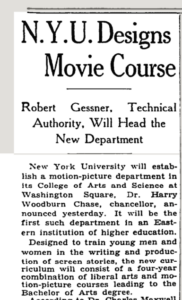Spoiler Alert!
If you’ve found this page, it’s because you’ve been granted top-secret access as a participant in the Visit Berlin’s Yiddishland walking tour. We will watch the video during the tour.
This page is mostly full of spoilers for what you’re about to see, so please don’t scroll through it yet. Afterwards, hob hanoye! Enjoy the playlist, the links, and the other digital goodies to your heart’s content.
But please don’t share these spoilers with friends in Berlin who might take the tour themselves. You can send the link to bobbe back home – make her proud, she should shep some nakhes.
Don’t Play This Video Yet!
Save it for when you’re standing in the exact spot where it was made.

Excerpts from:
USHMM: RG-60.1771
Title: Bustling Jewish life in Berlin
URL: https://collections.ushmm.org/
Credit Line: United States Holocaust Memorial Museum, gift of Peter Gessner
Robert Gessner, who shot this footage, was a US-born Jewish photographer and filmmaker who documented Jewish communities in Europe and the Middle East and the rise of antisemitism in the 1930s, taking photos and film footage in the US, Palestine, England, France, Germany, Poland, Lithuania, and Russia. In 1936, two years after this European trip, he published a book titled Some of My Best Friends Are Jews, warning of the Nazi threat. He was also a screenwriter and pioneered film studies, founding the Motion Picture Department at New York University in 1941, which offered the first Bachelor’s degree program in motion picture studies in the US.
More on Robert Gessner’s films and the collection…
Soundtrack (More Spoilers) – Listen After Tour
Most of the historic songs from the compilation “Vorbei… Beyond Recall”, compiled by Horst J.P. Bergmeier, Rainer E. Lotz, Ejal Jakob Eisler. The full compilation is an 11-CD set costing €200, but most of the disks are now available on Spotify if you search the title.
The modern cover versions are mostly by the Semer Ensemble from their album Rescued Treasure.
The members of this supergroup – Alan Bern, Daniel Kahn, Mark Kovnatskiy, Sasha Lurje, Lorin Sklamberg, Martin Lillich, and Fabian Schnedler – are all very accomplished musicians and mostly perform in other configurations these days. They are all based in Berlin, apart from Kahn and Kovnatskiy, who live in Hamburg, and Sklamberg, who lives in New York. I recommend listening to and supporting them all.
Translations of Songs
A number of transliterated lyrics and translations of the songs the Semer Ensemble covered, including “Lebke Fort keyn Amerike” (the first song about the bad husband) and “Sholem Bais” (Esther & Jacob Moshkowitz’s marital argument song), are posted on their website.

Lullaby: Shlof, shlof, shlof
Sing the lullaby to the babies in your life!
Shlof, Shlof, Shlof – Sleep, sleep, sleep
Vocal and arrangement: Olga Avigail Mieleszczuk
Clarinet: Ittai Binnun
Violin: Daniel Hoffman
Contrabass: Yehonatan Levi
recorded in Ittai Binnun Studio Jerusalem
Mix/mastering: Marek Walaszek
Illustrations: cdd20

Adapted from: Die Schönsten Lieder der Ostjuden, ed. Fritz Mordechai Kaufmann. Berlin: Jüdischer Verlag, 1920.
Further Reading

- The two most active groups now promoting Yiddish culture in Berlin are Yiddish.Berlin and Shtetl Berlin. I am personally involved, in one way or another, with both groups. Yiddish.Berlin is more focused on literature, language, and visual art, Shtetl Berlin more on music. They both organize events, and Shtetl’s calendar culminates on an annual festival in the spring. I also organize Berlin’s Yiddish-speaking social club, Shmues un Vayn. Shtetl Berlin’s email newsletter is the best source of information about upcoming events in Berlin’s Yiddish scene.
- The poet who earned $30 for his first Yiddish poems was named A.N. Stencl. An excerpt of his memoirs, set partly in the Scheunenviertel, has been published here on In Geveb in my English translation.
- Read more about the project to recover and compile the recordings we listened to in this 2002 Washington Post article.
- More on the Semer Ensemble, which performs new versions of many of those songs, here.
- An interview (in German) with the artist Sebéstyen Fiumei who installed the Grenadierstraße street sign about his intervention and his thoughts on public memory.
- Here is a bio of Pinchus Lawanda, who sang the song Lebke fort keyn Amerike, the biggest hit from the tour, which we listened to first.
- And here is a bio of our good friend Esther Moshkovitsh, who sang the dispute duet with her husband Yankev.
- Isaac Steinberg, the Territorialist, was a fascinating character. Here is a video of the Yiddish poet Beyle Schaechter-Gottesmann reminiscing about him and his movement. You can read his Wikipedia entry here and an article about the Frayland-Lige (Free Land League), which he co-founded after fleeing Berlin, here.
- My friend Melissa Richer’s ongoing book/film project about her family history in Berlin and Beicz, Poland is called The Last Daughter. Follow the project on Instagram: @thelastdaughter_film
- You can read about the life of Jochewed Jungermann Goldschal (who sent a letter to the Gestapo) here. There are also biographies in German of her and her sister Esther on the Stolpersteine Berlin website.
- More about Fritz Mordechai Kaufmann, who compiled the songbook of Jewish folksongs including “Shlof, shlof, shlof.”
- Some background on the long-debated circumstances of Rosa Luxemburg’s murder together with her comrade Karl Liebknecht, which is often debated on my tour. Essentially, although it was a right-wing military unit under Waldemar Pabst that carried out the killing, the Social Democratic Defense Minister Gustav Noske was clearly complicit, and it is telling that no one was punished for the murder under the SPD government. The SPD published this opinion piece (in German) in its party newspaper, but has since mysteriously taken it down from their website. According to the piece, two prominent SPD officials acknowledged Noske’s role during a panel discussion in 1999.